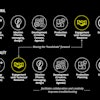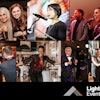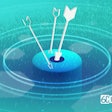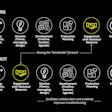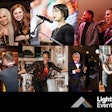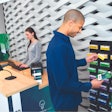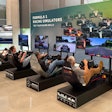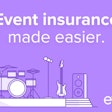
What event badges will look like—and whether they will exist at all—is something Ivan Lazarev spends a lot of time thinking about. Lazarev, president and C.E.O. of ITN International, a event technology company, shared his vision for the future of event badges with BizBash:
You have predicted every attendee’s badge will be digital within three years. Tell me your vision.
I just returned from a major conference in China where they had a whole day session on near-field communications, a new technology integrated into mobile phones. I learned that by 2014 there will be two billion phones with N.F.C. embedded into them. What it tells us is there is definitely a commitment by the major network operators and handset operators to have N.F.C.-integrated into phones. It's a technology that will literally change how people will interact with their phones and content services. Whether we like it or not, it will grow exponentially in terms on adoption and growth. That's why I made that projection.
Give a quick explanation of "near-field communications" for people unfamiliar with the term.
It's a reader-writer that is embedded into your phone. Your phone can read another phone and write at the same time. The best way to describe it is a short-range technology embedded into your phone that can touch. They call it touch marketing, and it's going to be a big thing. You'll be able to touch with your phone, and you can read whatever link has been embedded into your phone.
How is this different from badge scanners we have seen before, or QR codes?
It's a completely different concept. With all scanners you still have to have a badge. My comment was, you will no longer need a paper badge. In a few years you'll be able to go to convention center with phone, you'll tap your phone and a paper badge will print out. The badge will have a big name on it, but your business card, your access rights to sessions, if you've purchased any ticketed items—all of those items will be available in your phone. Right now people issue paper badges with 2-D bar codes and you need a 2-D reader. With QR codes, you have to point the camera and have to read it. It's not as simple as touching a phone to a hot spot. That's why phone manufacturers have adopted N.F.C. They all knew QR codes would only work for a certain amount of time. The best example is Japan. Five years ago people were going crazy over QR codes. Today, it's all N.F.C. Right now it's funny, in the United States we're just now discovering QR codes and you see them everywhere. In three years they will be gone.
But attendees will still wear paper badges. Why?
You'll still need the branding and the visual part, but it will be low cost.
This is high-tech stuff, but you say it will save money. How?
Right now, you pay a company to bring computers, printers, and infrastructure to a site to issue and mange the registration site. I predict most people will go online and do this from the comfort of their homes. The badges will be loaded onto their phones, and all they will do onsite is use an infrastructure that I predict will be provided by the venues. The Las Vegas Convention Center and the big convention centers in Atlanta and Chicago will have kiosks that print paper badges. The same kiosk will be able to print badges from three or four different shows that are occurring at the same time. Your costs will go down because you will not pay for infrastructure. You'll still pay for registration services, but that's an online application. You're not going to need to pay as much for all of the hardware and all of the shipping expenses. That's why I predict prices will go down.
What if someone doesn't have a smartphone?
We know there will be a transitional phase. For those people, you will generate an actual badge that is N.F.C. Those people will still have a one-way experience. They won't be able to touch tags and get information on their phone, but people can touch their tags and get their information. It's no different from a 2-D bar code badge or a mag stripe badge.
Is the technology available now to make this happen?
This is available today. There are a few things that need to be done in terms of the value chain. They need to find who the right people are and how it works. You'll see tapping very soon. We're going to be demonstrating it. What we're working on now is the phone-to-phone part. We had to wait awhile because the phone manufacturers were getting their act together. Now they have, and it's a matter of software, and that's the easiest part. You're going to see an awful lot of stuff in the fourth quarter of 2012 and most definitely in 2013. It's about identifying these touches and marketing information that we can track and obtain from the use of the technology. it will provide valuable insights that show managers can use to provide better analytics on their events. Everybody's going to win: the attendees, the vendors, and the show producers.

